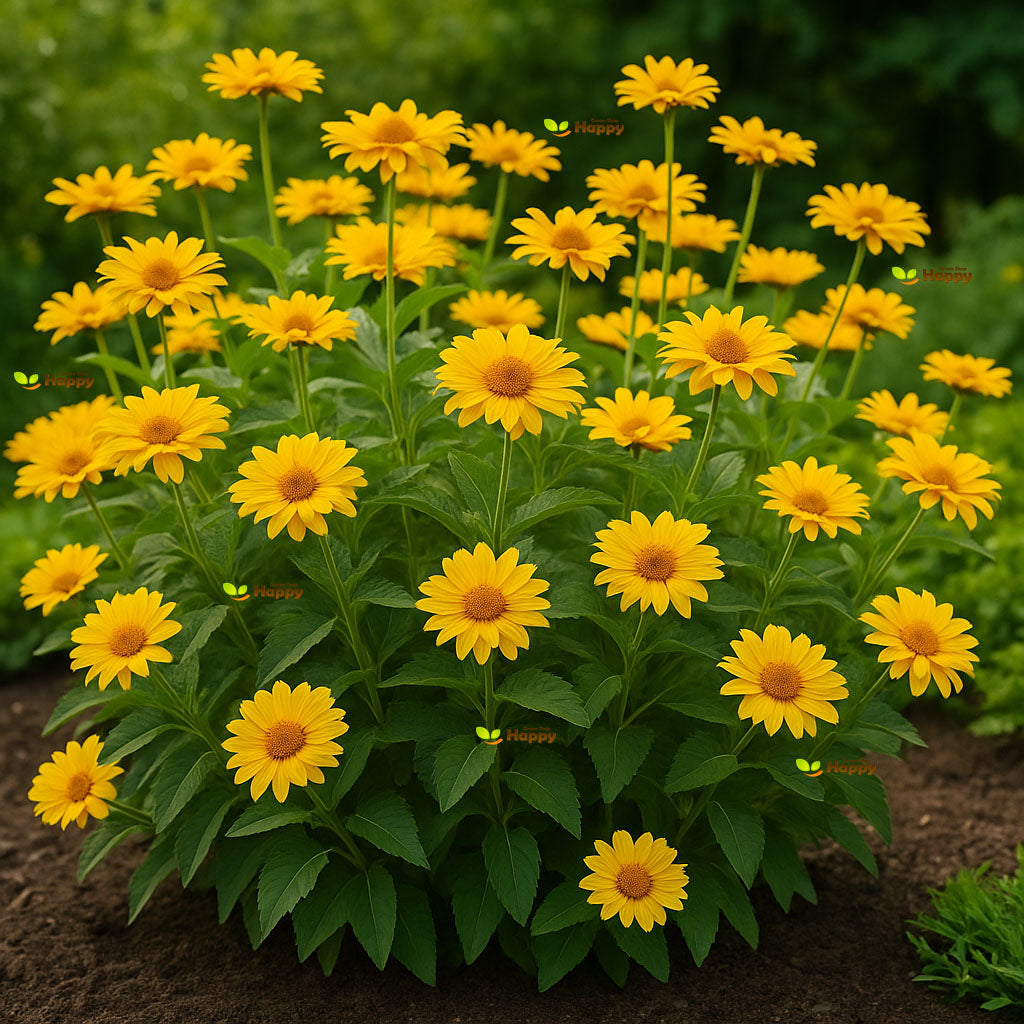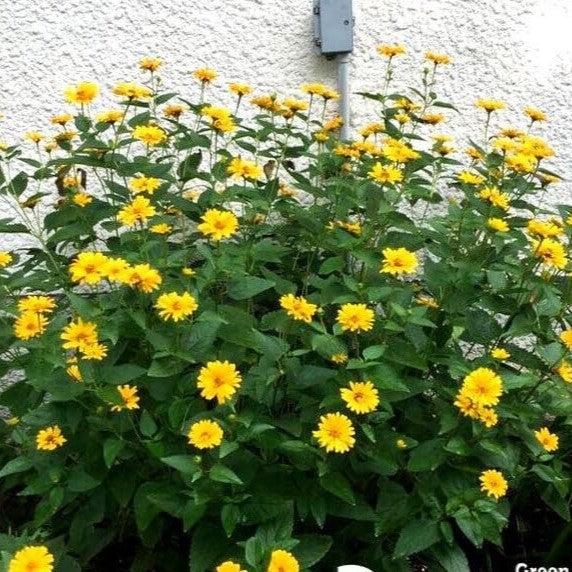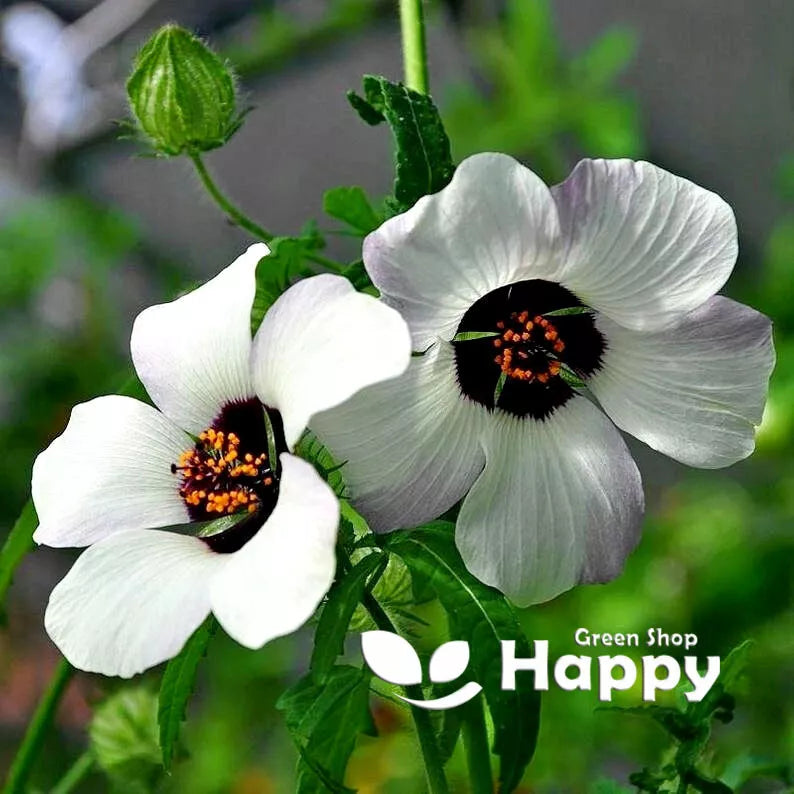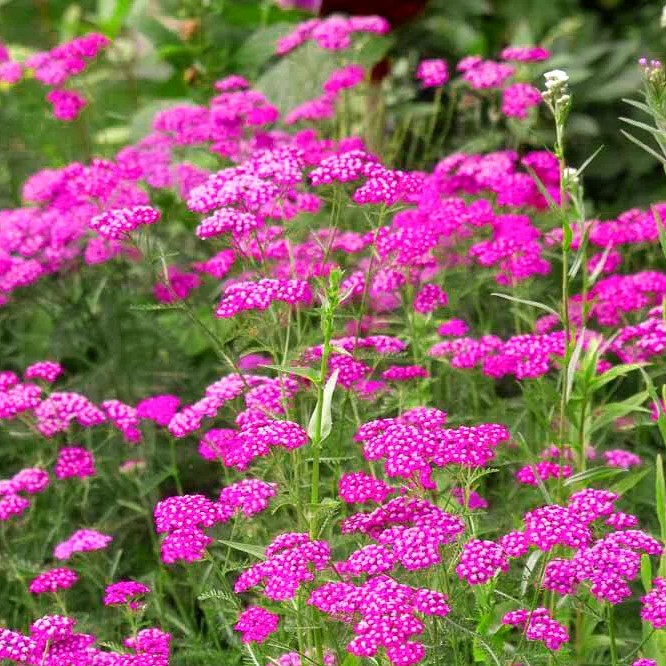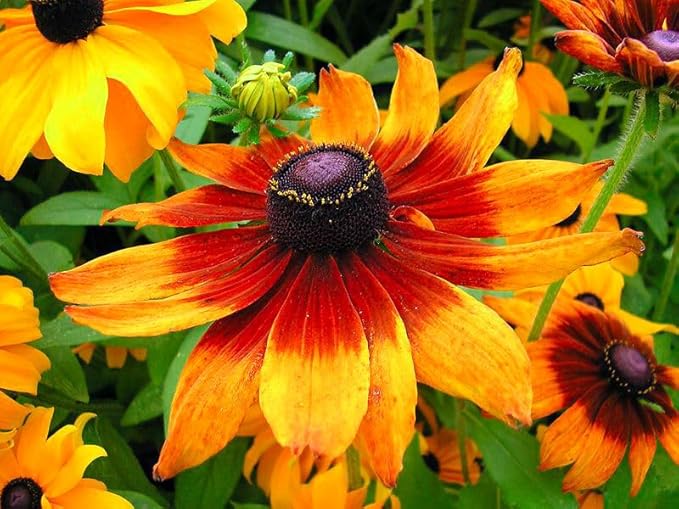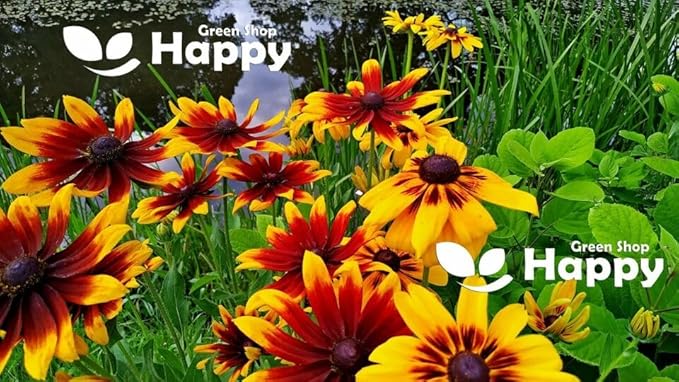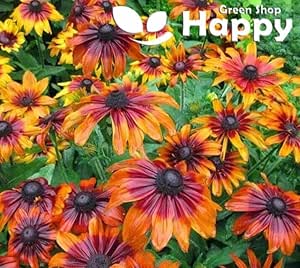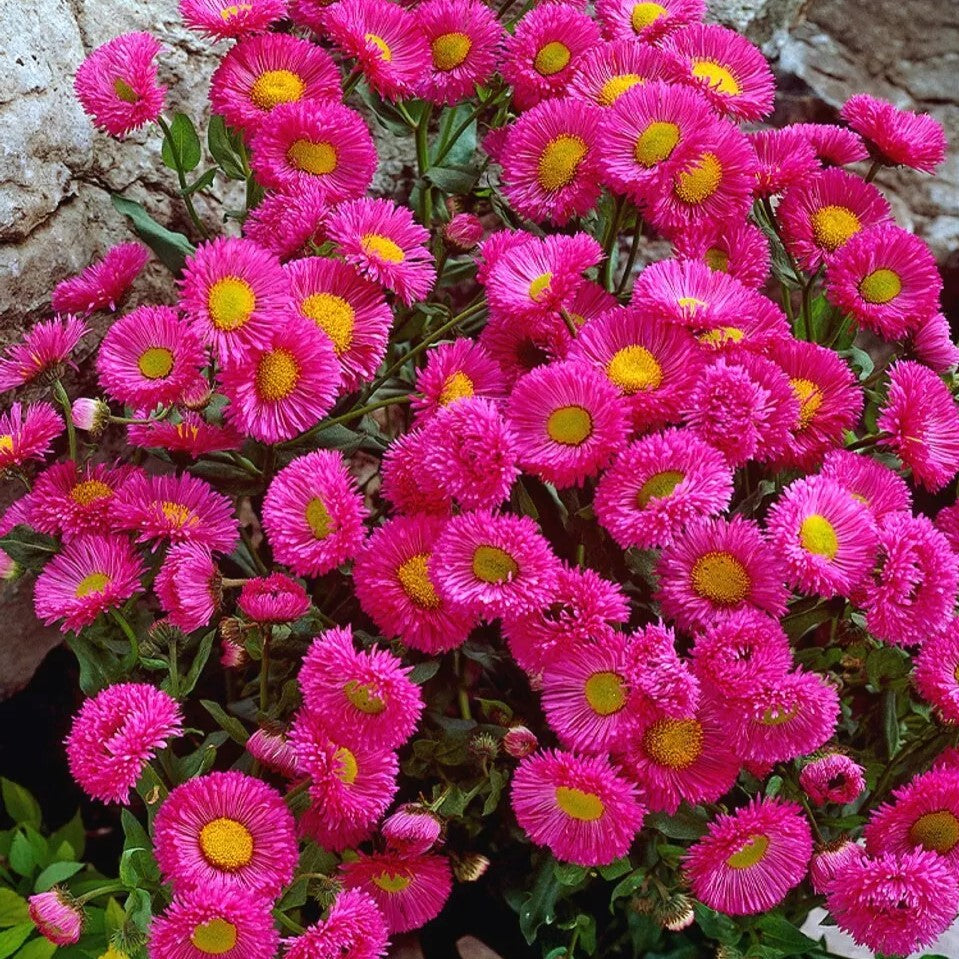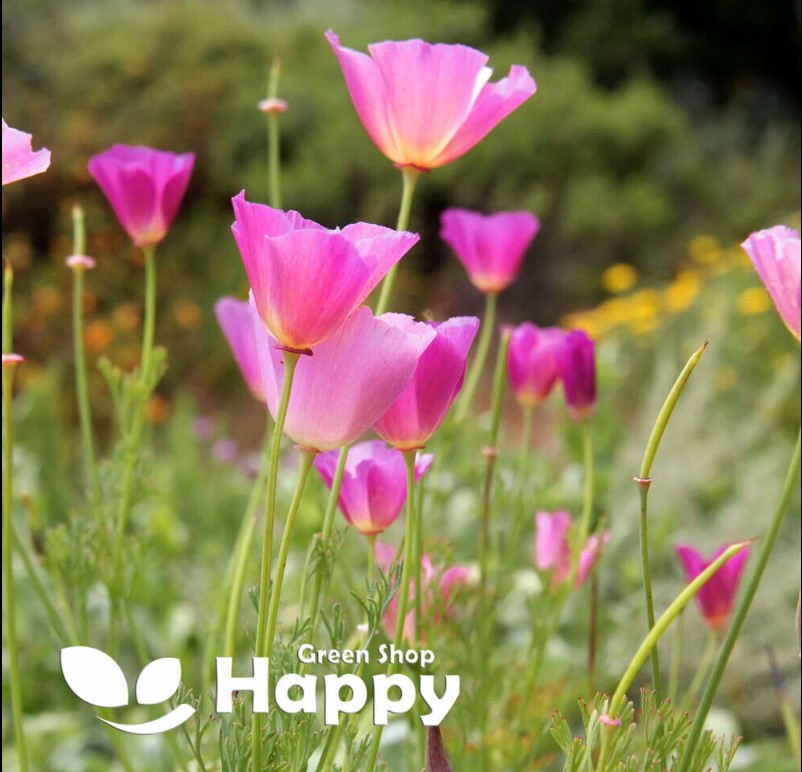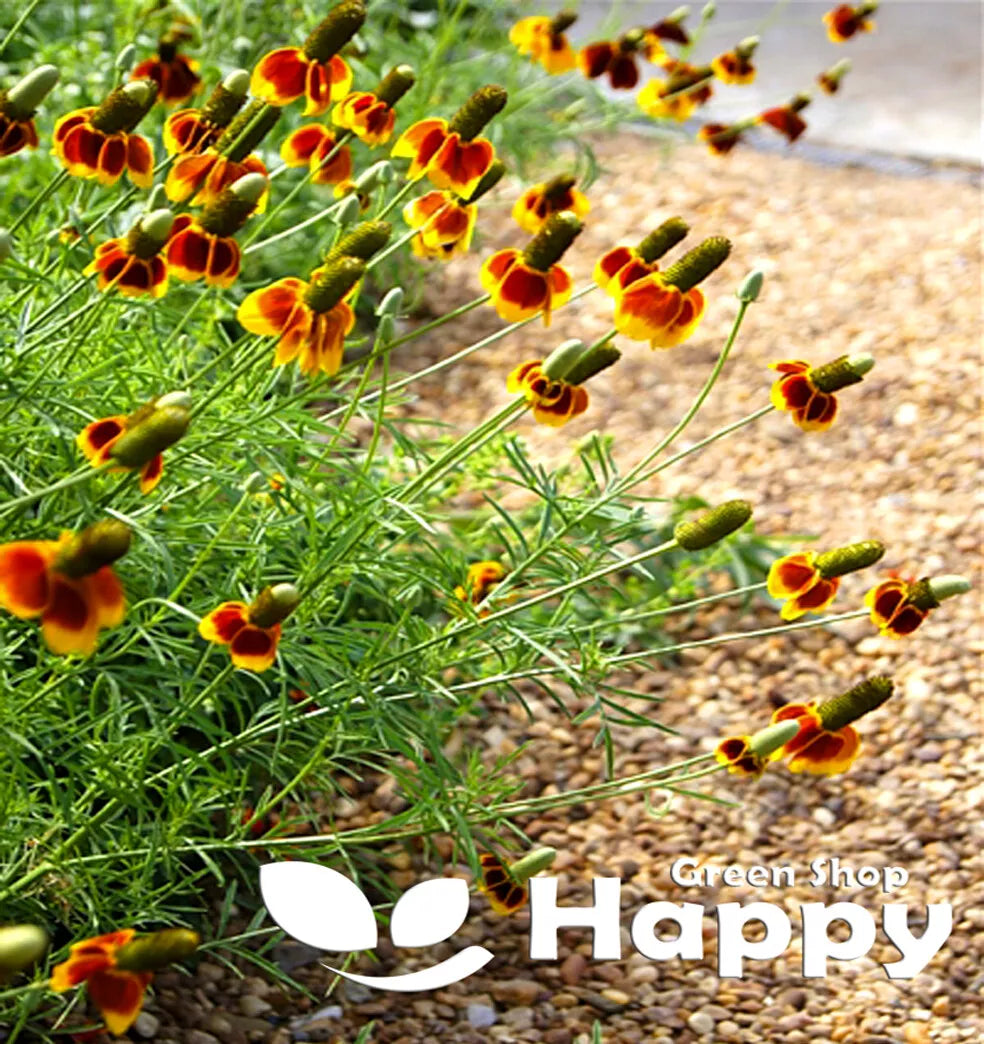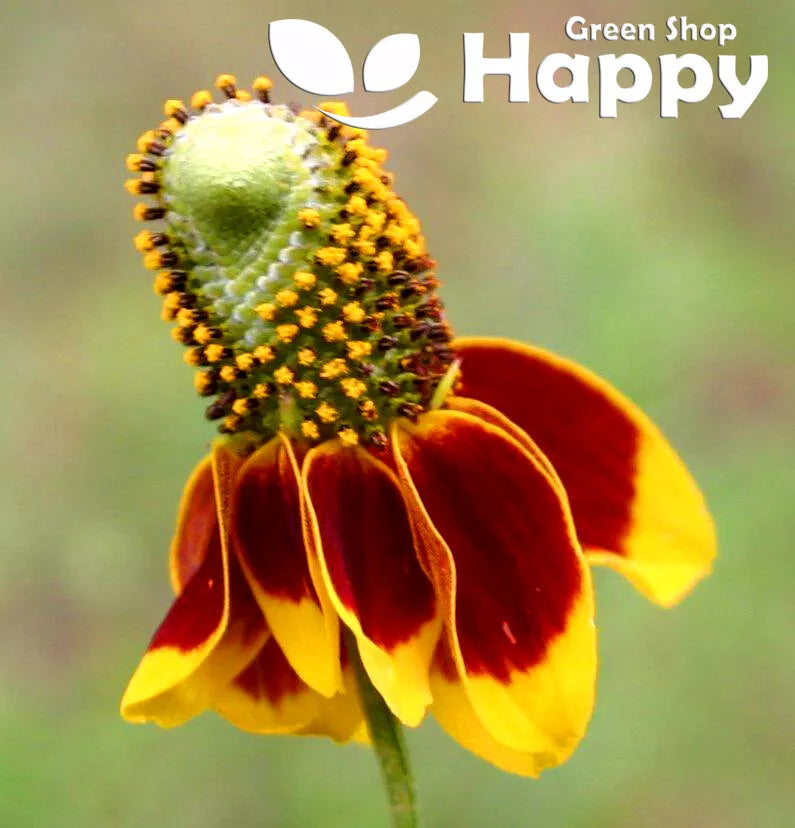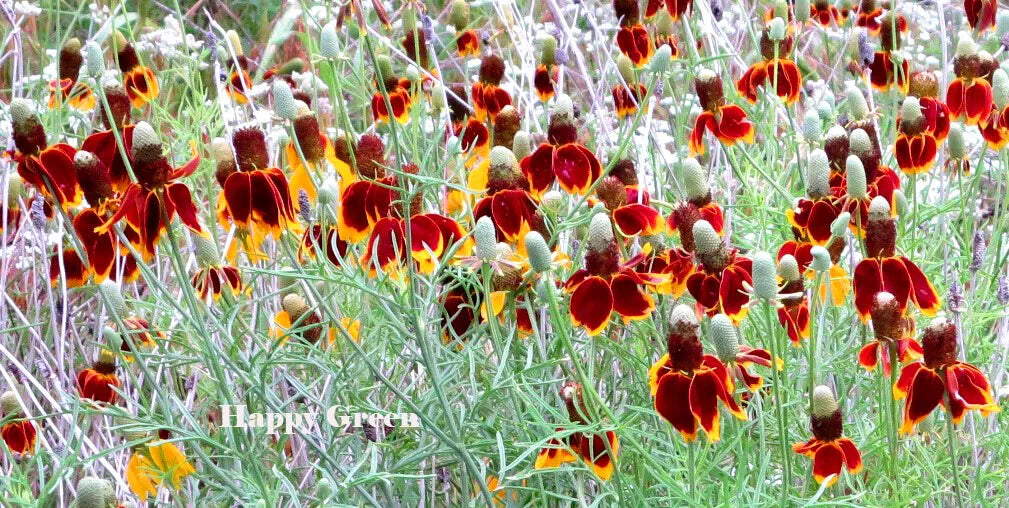Sort by:
211 products
211 products
Summer Sun – Seeds (Heliopsis scabra)
Summer Sun (Heliopsis scabra) is a hardy perennial known for its bright, golden-yellow, daisy-like flowers that bloom from mid-summer to early autumn. With tall, upright stems and lush green foliage, this variety adds long-lasting color and height to borders, cottage gardens, and mixed perennial beds. Easy to grow and low-maintenance, it attracts pollinators and provides a cheerful, sunny display all summer long.
Why Grow "Summer Sun"
-
Vibrant golden-yellow daisy-like blooms
-
Long flowering season from mid-summer to early autumn
-
Hardy, low-maintenance perennial
-
Attracts bees, butterflies, and other pollinators
Key Features
-
Type: Perennial (Heliopsis scabra)
-
Height: 60–90 cm
-
Flowering: Mid-summer to early autumn
-
Position: Full sun
-
Uses: Borders, cottage gardens, mixed perennial beds, pollinator-friendly gardens
Ideal For
-
Adding bright color and height to summer borders
-
Cottage and perennial garden beds
-
Pollinator-friendly garden planting
-
Long-lasting summer displays
Sowing & Growing
-
Sow indoors: February–April in trays or pots
-
Sow outdoors: April–May directly in soil
-
Germination: 10–20 days at 18–22°C
-
Thin seedlings 30–40 cm apart
-
Prefers well-drained soil in full sun
-
Water moderately until established
Flower-of-an-Hour – Seeds (Hibiscus trionum)
Flower-of-an-Hour (Hibiscus trionum) is an eye-catching annual known for its delicate, pale yellow flowers with deep maroon centers that open in the morning and fade by evening. Blooming from summer to early autumn, this compact plant adds charm to borders, containers, and cottage-style gardens. Easy to grow and drought-tolerant once established, it attracts pollinators while providing fleeting, yet memorable, blooms that brighten any garden.
Why Grow "Flower-of-an-Hour"
-
Pale yellow flowers with striking maroon centers
-
Blooms open in the morning and fade by evening
-
Compact, drought-tolerant, and easy-to-grow
-
Attracts bees, butterflies, and other pollinators
Key Features
-
Type: Annual (Hibiscus trionum)
-
Height: 30–50 cm
-
Flowering: Summer to early autumn
-
Position: Full sun
-
Uses: Borders, containers, cottage gardens, pollinator-friendly gardens
Ideal For
-
Cottage-style and naturalistic gardens
-
Borders, containers, and small spaces
-
Pollinator-friendly garden designs
-
Gardens with morning bloom interest
Sowing & Growing
-
Sow indoors: February–April in trays or pots
-
Sow outdoors: April–May after frost
-
Germination: 7–14 days at 18–22°C
-
Thin seedlings 25–30 cm apart
-
Prefers well-drained soil in full sun
Yarrow ‘Milfoil Cerise Queen’ – Seeds (Achillea millefolium)
Yarrow ‘Milfoil Cerise Queen’ (Achillea millefolium) is a hardy perennial featuring flat-topped clusters of vibrant cerise flowers above fine, fern-like foliage. Blooming from early summer to autumn, it adds long-lasting color and texture to borders, rockeries, and wildflower gardens. Drought-tolerant, low-maintenance, and attractive to pollinators, this yarrow is ideal for sustainable gardens and mixed perennial beds.
Why Grow "Milfoil Cerise Queen"
-
Vibrant cerise, flat-topped flower clusters
-
Long flowering season from early summer to autumn
-
Hardy, drought-tolerant, and low-maintenance
-
Attracts bees, butterflies, and other pollinators
Key Features
-
Type: Perennial (Achillea millefolium)
-
Height: 40–60 cm
-
Flowering: Early summer to autumn
-
Position: Full sun
-
Uses: Borders, rockeries, wildflower gardens, pollinator-friendly beds
Ideal For
-
Adding bold color and texture to perennial borders
-
Sustainable and low-water gardens
-
Pollinator-friendly planting schemes
-
Cottage-style or naturalistic gardens
Sowing & Growing
-
Sow indoors: February–April in trays or pots
-
Sow outdoors: March–May directly in soil
-
Germination: 10–20 days at 18–22°C
-
Thin seedlings 30 cm apart
-
Prefers well-drained soil in full sun
-
Cut back spent flowers to encourage rebloom
Rock Cress ‘Cascade Blue’ – Seeds (Aubrieta cultorum)
Rock Cress ‘Cascade Blue’ (Aubrieta cultorum) is a hardy, low-growing perennial renowned for its vibrant blue-purple flowers that carpet the garden in spring. Ideal for rockeries, walls, borders, and cascading over edges, this compact plant forms a dense mat of foliage with long-lasting blooms. Easy to grow and drought-tolerant once established, it provides early-season color and attracts pollinators such as bees and butterflies.
Why Grow "Cascade Blue"
-
Stunning blue-purple blooms in early spring
-
Forms a dense, trailing mat perfect for rockeries and edges
-
Hardy, low-maintenance, and drought-tolerant
-
Attracts pollinators to your garden
Key Features
-
Type: Perennial (Aubrieta cultorum)
-
Height: 15–20 cm
-
Flowering: Early to mid-spring
-
Position: Full sun to partial shade
-
Uses: Rock gardens, borders, walls, cascading over edges, pollinator-friendly gardens
Ideal For
-
Rockeries and alpine gardens
-
Border edging and ground cover
-
Walls, steps, and raised beds
-
Pollinator-friendly spring displays
Sowing & Growing
-
Sow indoors: February–March in trays or pots
-
Sow outdoors: April–May directly in soil
-
Germination: 14–21 days at 15–20°C
-
Thin seedlings 15–20 cm apart
-
Prefers well-drained soil in full sun to partial shade
Rudbeckia ‘Cherry Brandy’ – Seeds (Rudbeckia hirta)
Rudbeckia ‘Cherry Brandy’ (Rudbeckia hirta) is a striking annual featuring rich, dark cherry-red blooms with a golden center. Blooming from summer to autumn, this compact, bushy plant adds bold color to borders, containers, and cottage gardens. Easy to grow and drought-tolerant once established, it attracts bees, butterflies, and other pollinators, making it both beautiful and wildlife-friendly.
Why Grow "Cherry Brandy"
-
Dark cherry-red flowers with golden centers
-
Long flowering season from summer to autumn
-
Compact, bushy, and easy-to-grow
-
Pollinator-friendly and drought-tolerant
Key Features
-
Type: Annual (Rudbeckia hirta)
-
Height: 40–60 cm
-
Flowering: Summer to autumn
-
Position: Full sun
-
Uses: Borders, beds, containers, pollinator gardens
Ideal For
-
Adding bold color to summer and autumn gardens
-
Cottage-style borders and mixed plantings
-
Containers and patio pots
-
Wildlife-friendly planting schemes
Sowing & Growing
-
Sow indoors: February–April in trays or pots
-
Sow outdoors: April–May after frost
-
Germination: 10–20 days at 18–22°C
-
Transplant seedlings 25–30 cm apart
-
Prefers well-drained soil in full sun
Butter Daisy – Seeds (Melampodium paludosum)
Butter Daisy (Melampodium paludosum) is a cheerful, low-growing annual that produces masses of bright golden-yellow daisy-like flowers all summer long. With its compact, bushy habit and continuous blooms, it’s perfect for borders, edging, rockeries, and containers. Easy to grow, drought-tolerant, and heat-loving, this daisy thrives in hot, sunny spots and poor soils, making it a reliable choice for vibrant, low-maintenance displays.
Why Grow "Butter Daisy"
-
Masses of bright golden-yellow flowers
-
Compact and bushy with nonstop blooms
-
Heat- and drought-tolerant
-
Easy to grow and low-maintenance
Key Features
-
Type: Annual (Melampodium paludosum)
-
Height: 20–30 cm
-
Flowering: Summer to autumn
-
Position: Full sun
-
Uses: Borders, edging, rock gardens, containers
Ideal For
-
Adding bright summer color to small spaces
-
Patio pots and balcony containers
-
Low-maintenance or hot, sunny gardens
-
Long-lasting bedding and edging
Sowing & Growing
-
Sow indoors: March–April in trays or pots
-
Sow outdoors: May, after frost danger has passed
-
Germination: 7–14 days at 20–22°C
-
Transplant seedlings 20 cm apart
-
Prefers well-drained soil in full sun
Fleabane Daisy ‘Pink Jewel’ – Seeds (Erigeron speciosus)
Fleabane Daisy ‘Pink Jewel’ (Erigeron speciosus) is a hardy perennial producing masses of cheerful daisy-like blooms in shades of rosy-pink with golden centers. Flowering from early summer into autumn, this variety brings long-lasting color and a natural charm to borders, cottage gardens, and wildlife areas. Easy to grow and drought-tolerant once established, it is a reliable choice for low-maintenance gardens. Its nectar-rich flowers are highly attractive to bees, butterflies, and other pollinators.
Why Grow "Pink Jewel"
-
Masses of rosy-pink daisy-like flowers with golden centers
-
Long flowering season from summer to autumn
-
Hardy, drought-tolerant, and low-maintenance
-
Attracts bees, butterflies, and pollinators
Key Features
-
Type: Perennial (Erigeron speciosus)
-
Height: 40–60 cm
-
Flowering: Early summer to autumn
-
Position: Full sun or partial shade
-
Uses: Borders, cottage gardens, wildlife gardens, cut flowers
Ideal For
-
Adding pink color to borders and beds
-
Naturalistic and cottage-style planting
-
Wildlife-friendly and pollinator gardens
-
Low-maintenance perennial displays
Sowing & Growing
-
Sow indoors: February–April in trays or pots
-
Germination: 14–21 days at 18–22°C
-
Transplant outdoors after frost danger has passed
-
Space seedlings: 30 cm apart
-
Prefers well-drained soil in full sun or light shade
California Poppy ‘Purple Gleam’ – Seeds (Eschscholzia californica)
California Poppy ‘Purple Gleam’ (Eschscholzia californica) is a striking variety with silky lilac-pink flowers that glow in the sun. This hardy, drought-tolerant annual thrives in poor soils and is perfect for borders, rockeries, and wildflower meadows. Flowering from summer into autumn, it brings long-lasting color while attracting bees and butterflies. Easy to grow and self-seeding, it will return year after year with minimal effort.
Why Grow "Purple Gleam"
-
Unique lilac-pink flowers with a shimmering finish
-
Long flowering season from summer to autumn
-
Hardy, drought-tolerant, and low-maintenance
-
Attracts bees, butterflies, and pollinators
Key Features
-
Type: Hardy annual (Eschscholzia californica)
-
Height: 20–30 cm
-
Flowering: Summer to autumn
-
Position: Full sun
-
Uses: Borders, rockeries, meadows, containers, pollinator gardens
Ideal For
-
Naturalistic and wildflower-style gardens
-
Adding soft, unusual color to borders and beds
-
Rockeries and container planting
-
Easy, low-maintenance seasonal color
Sowing & Growing
-
Sow outdoors: March–May or September for earlier blooms
-
Germination: 14–21 days
-
Thin seedlings: 15–20 cm apart
-
Prefers poor to moderately fertile, well-drained soil
-
Self-seeds freely for natural displays
Mexican Hat – Seeds (Ratibida columnifera)
Mexican Hat (Ratibida columnifera) is a striking perennial wildflower named for its sombrero-shaped blooms. From summer into autumn, it produces vibrant yellow and red petals surrounding a tall, central cone. Hardy and drought-tolerant, it thrives in poor soils and full sun, making it perfect for naturalistic plantings, meadows, and wildlife gardens. Its long-lasting blooms attract bees, butterflies, and other pollinators, adding color and biodiversity to your outdoor space.
Why Grow "Mexican Hat"
-
Unique sombrero-shaped flowers in yellow and red
-
Long flowering from summer to autumn
-
Drought-tolerant and thrives in poor soils
-
Attracts bees, butterflies, and other pollinators
Key Features
-
Type: Perennial (Ratibida columnifera)
-
Height: 60–90 cm
-
Flowering: Summer to autumn
-
Position: Full sun
-
Uses: Meadows, wildlife gardens, borders, naturalistic plantings
Ideal For
-
Wildflower meadows and prairie-style gardens
-
Pollinator-friendly planting
-
Low-maintenance and drought-tolerant gardens
-
Adding unique blooms to borders and beds
Sowing & Growing
-
Sow indoors: 6–8 weeks before last frost
-
Sow outdoors: After frost danger has passed
-
Germination: 14–21 days
-
Space seedlings: 25–30 cm apart
-
Prefers well-drained, sandy or poor soils in full sun
Showing 81/211





